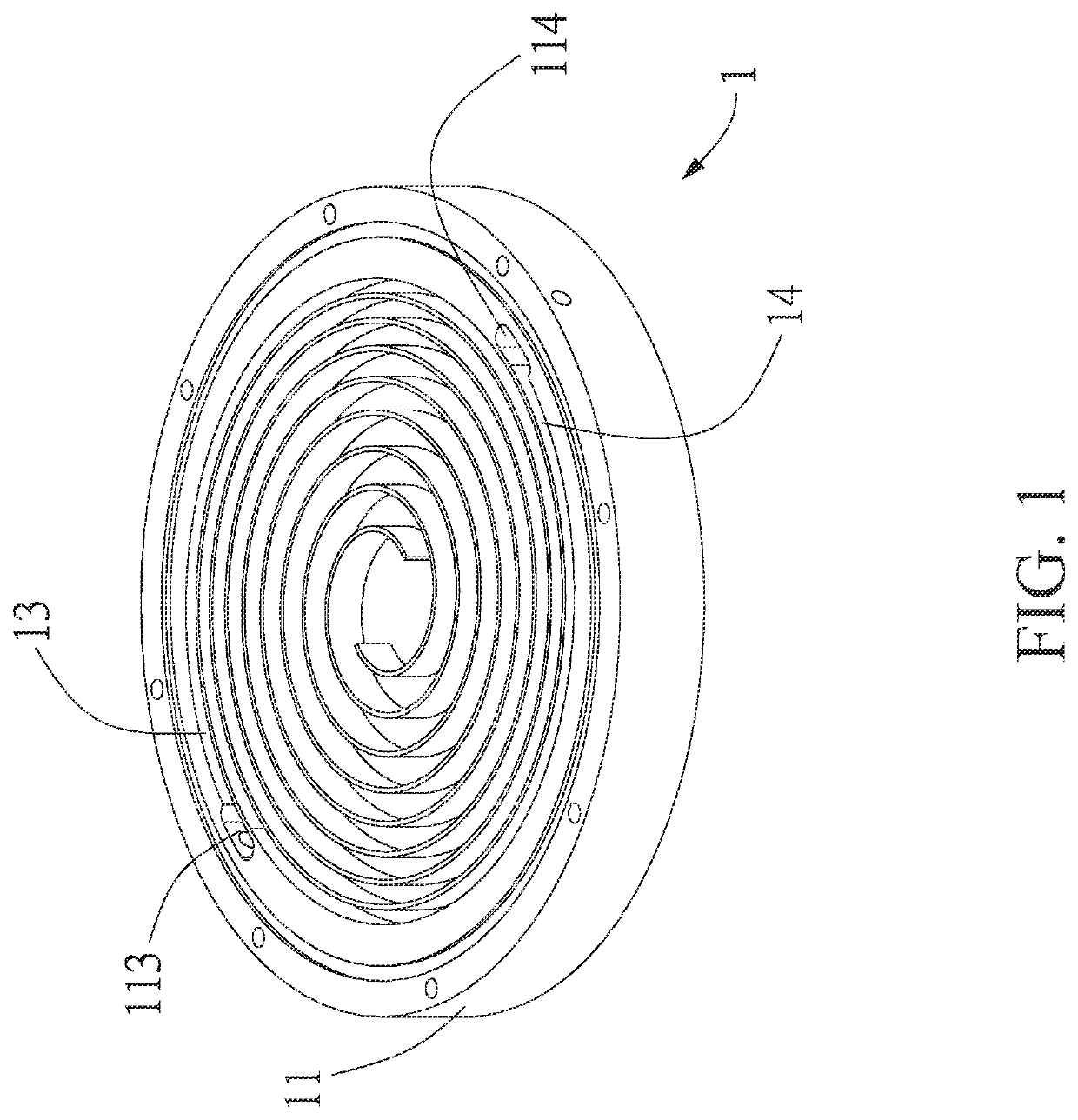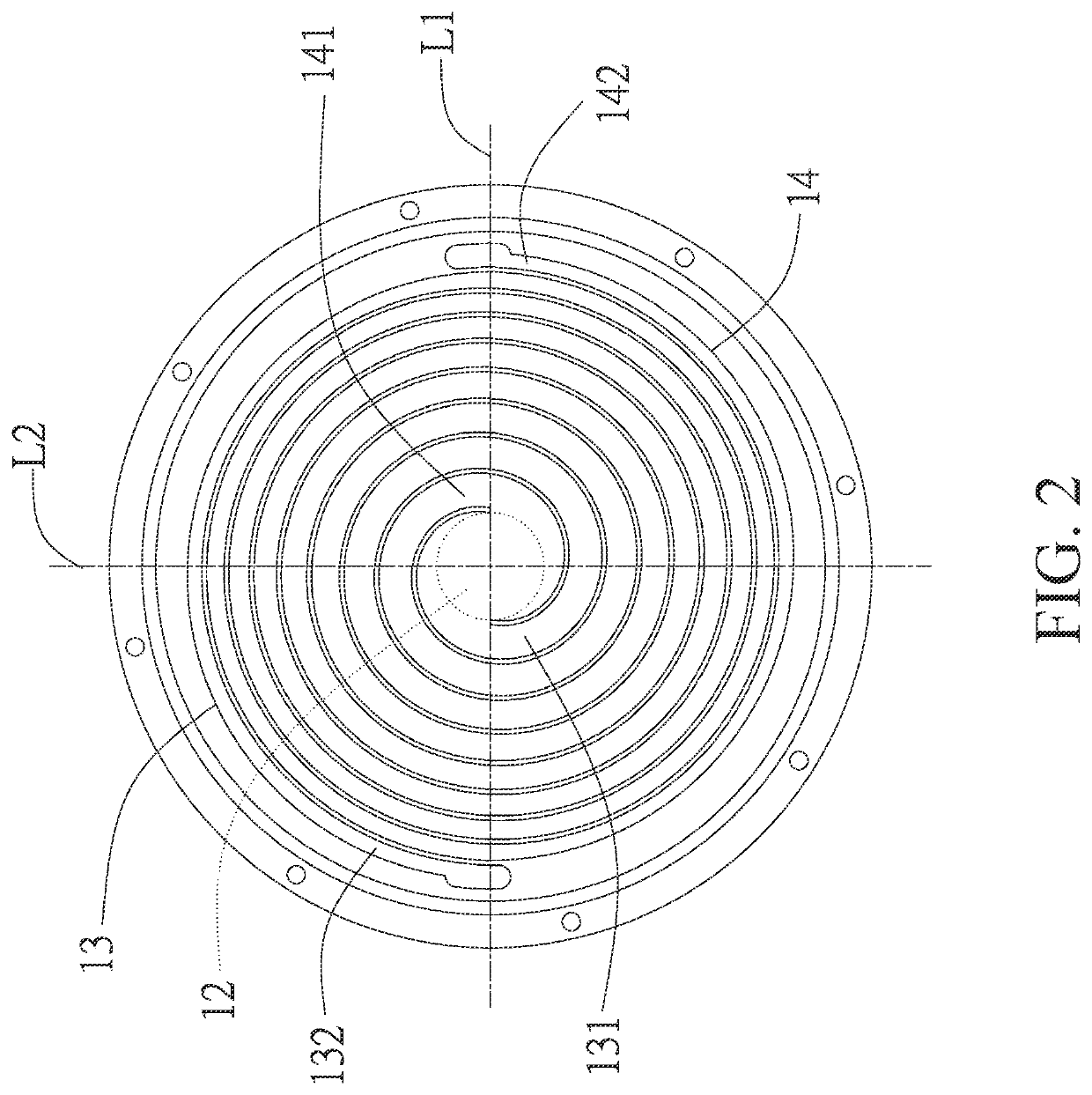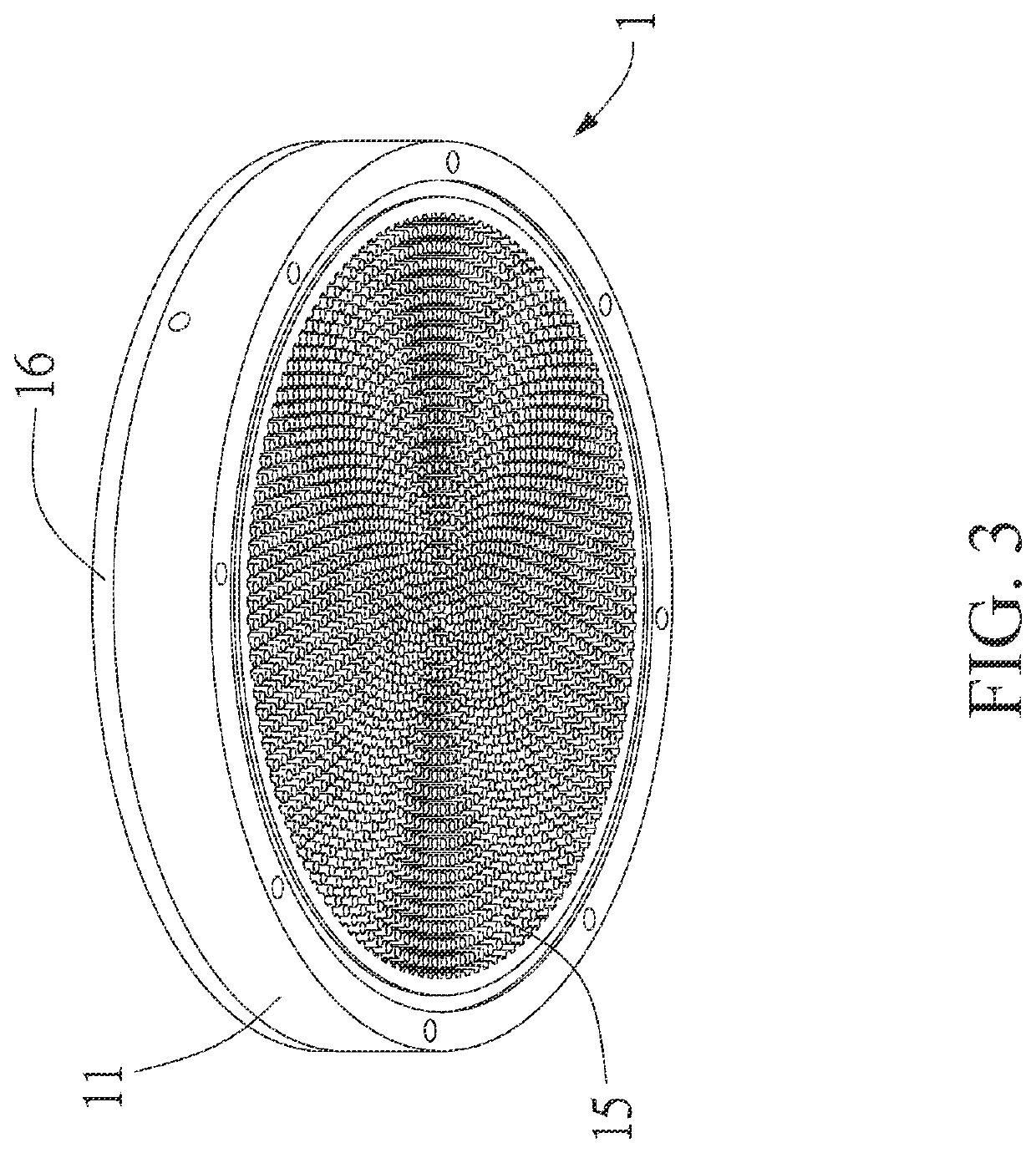Scroll heating device
a heating device and roller technology, applied in lighting and heating apparatus, combustion types, combustion using catalytic materials, etc., can solve the problems of affecting the mechanical structure and weight of the heat exchanger and affecting the combustion efficiency of the heat source for use with a stirling engin
- Summary
- Abstract
- Description
- Claims
- Application Information
AI Technical Summary
Benefits of technology
Problems solved by technology
Method used
Image
Examples
Embodiment Construction
[0027]The detailed description and preferred embodiments of the invention will be set forth in the following content, and provided for people skilled in the art to understand the characteristics of the invention.
[0028]Referring to FIGS. 1-3, the scroll heating device 1 according to an embodiment of the present invention includes a base 11, a reaction region 12, a first channel 13, a second channel 14, a plurality of pin fins 15, and a cover 16. The scroll heating device 1 is adapted to be coupled to the heating end of a Stirling engine 9 (see FIG. 6).
[0029]The scroll heating device 1 is made of a thermally conductive material. The thermally conductive material may be one or a combination selected from the group consisting of a metal, a metal alloy (preferably stainless steel, an aluminum alloy, etc.), and ceramic, and is preferably resistant to temperatures as high as 933 K. Due to its good thermal conductivity, the thermally conductive material can conduct heat to the Stirling engi...
PUM
 Login to View More
Login to View More Abstract
Description
Claims
Application Information
 Login to View More
Login to View More - R&D Engineer
- R&D Manager
- IP Professional
- Industry Leading Data Capabilities
- Powerful AI technology
- Patent DNA Extraction
Browse by: Latest US Patents, China's latest patents, Technical Efficacy Thesaurus, Application Domain, Technology Topic, Popular Technical Reports.
© 2024 PatSnap. All rights reserved.Legal|Privacy policy|Modern Slavery Act Transparency Statement|Sitemap|About US| Contact US: help@patsnap.com










